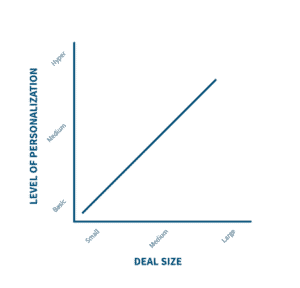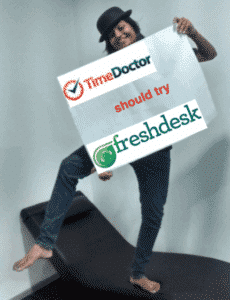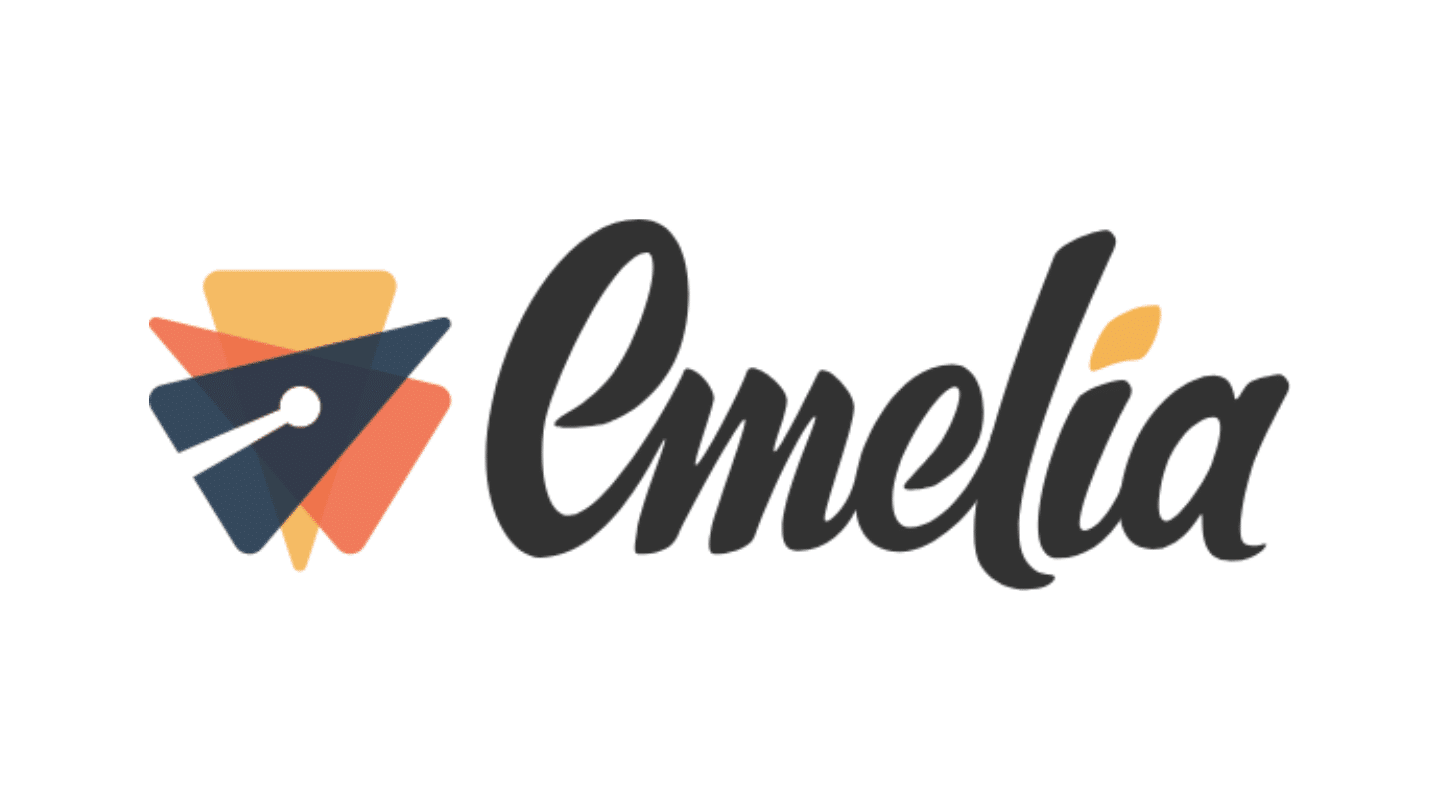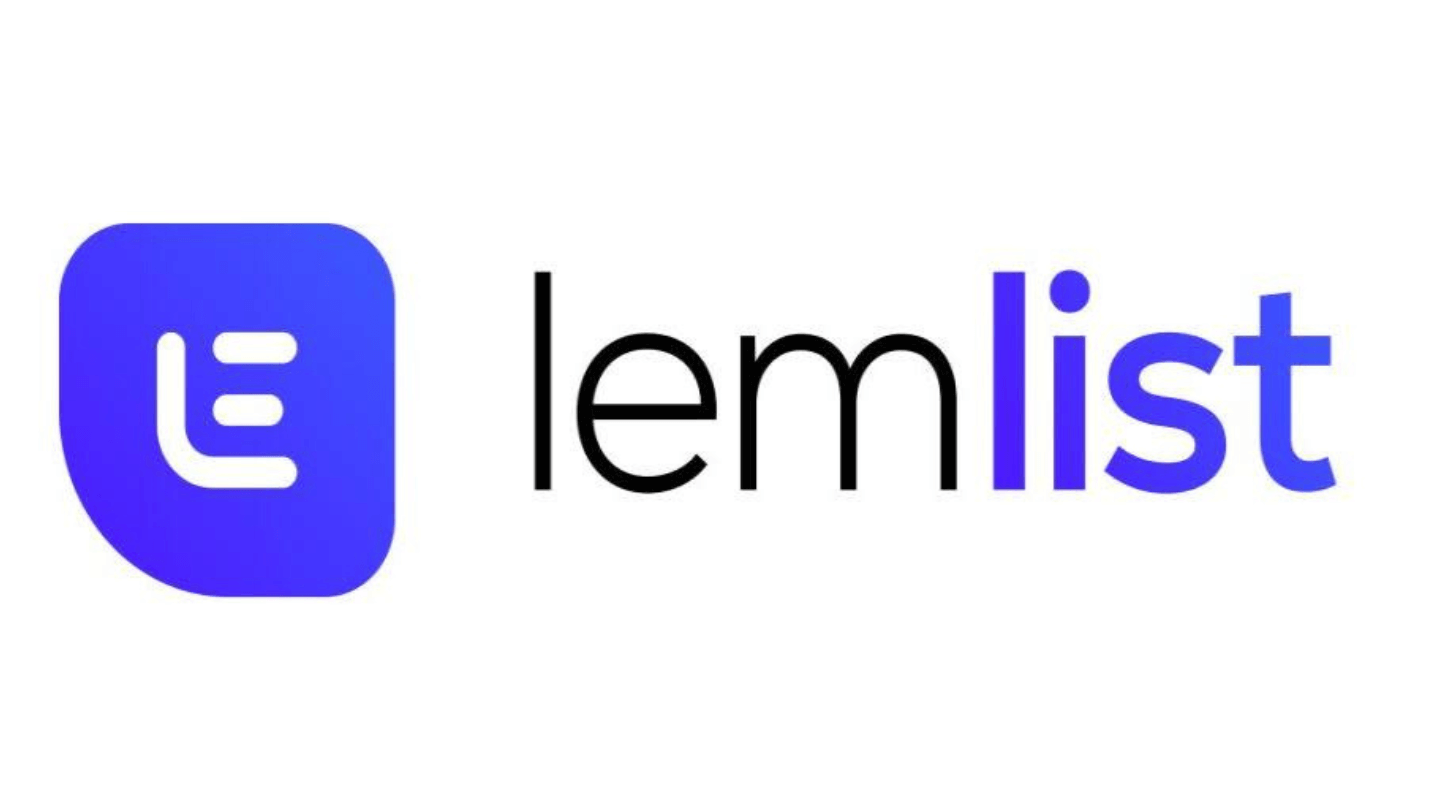While shopping in the supermarket, you come across a can of Coca-Cola with your name on it.
You buy it, just for the pleasure of having your name on it!
You browse Amazon and see all your favourite gadgets recommended to you in the homepage, urging you to buy.
You resist the urge this time.
You log in to Facebook and see recommendations of the best flight deals for your favourite holiday destination. This time you click on them.
Does it remind you of anything?
Welcome to the age of customisation.
Sommaire
The science of customisation
If you’re wondering why companies use personalisation to target and attract consumers, there’s a reason.
Behind this approach is the science that proves that personalisation makes people more receptive to what companies have to offer.
When people receive personalised content, it makes them feel special because of its personalised nature. When a person receives something that is unique to them, it gives them a sense of control.
And this leads to a sense of empowerment in the minds of prospects, prompting them to make a buying decision!
Effect of personalisation in sales email campaigns
The effects of personalisation are not only relevant for big brands or companies selling consumer goods. This strategy has also been successfully used by sales representatives and B2B marketing professionals, especially when prospecting by email.
To personalise your emails, the quality of your prospecting data is key. Look at B2B data enrichment software like dropcontact to enrich your prospecting files
Here are some facts showing the impact of personalisation in emails:
- Personalised emails improve click-through rates by 14% and conversion rates by 10% [ Aberdeen ].
- Personalized email campaigns generate 20% more sales opportunities than non-personalized ones [ DemandGen ]
- Custom call-to-actions generate 42% higher conversion rates than generic call-to-actions [ HubSpot ].
- 31% of consumers are more likely to make a purchase if they are offered relevant content [ BloomReach ].
Personalized emails, without a doubt, are one of the most powerful ways to get a response from a potential customer. The question is how much time you will spend on personalising your emails.
How personal should your emails be?
Ideally, you would like to send personalised emails to all prospects, to increase the chances of getting a response. But such a practice is not feasible.
Why?
When you’re prospecting on a large scale, it’s not possible towrite a personalisedemail for every single prospect. Imagine how long it would take you to research and write emails to over 100 prospects in one day?
Is it really worth spending so much time on each of them? No.
Considering that your prospects have different revenue potential for your business, it makes no sense to make the same effort for each of them.
So what’s the solution? Use different levels of personalisation for your prospects depending on the potential.
Potential: deal amount x number of deals purchased by the customer.
The more interesting the potential, the more personalised your emails should be.

Different levels of customisation
An effective way to decide how much personalisation you need in your email campaigns is to segment your prospects according to how much revenue they could bring to your business. This way you know how much you need to personalise for each prospect:
| Potential | Level of customisation | Time taken to compose emails |
| Low | Basic | <30 secondes / emails |
| Medium | Semi-custom | 2-5 minutes |
| Big | Hyper-customised | 10 minutes |
The first segment is the low potential prospects. The vast majority of your targets fall into this category, and the level of personalisation should be very basic, with the bulk of the work being in filling in the data in your table. The level of customisation should be very basic, with most of the work being in filling in the data in your table. For example, you can customise the name of the prospect, the name of the company, the position etc.
When approaching prospects with average potential, you need to increase the level of personalisation in the emails you send to your prospects to increase the chances of getting a response. This is done through a number of searches, which go beyond their name and position. For example, you can mention relationships and common interests, their company news, etc.
Finally, in the last segment, the prospects with the highest potential in your prospecting list. These are the behemoths of your listing and having them as customers would be a big coup. Being the top 5% of your accounts, they are usually only a handful. So, to contact these prospects, emails should be developed after thorough research and should be hyper-personalised. For example, address the specific business issues of the prospect.
How to personalise your emails?
Here are the different techniques to write personalized emails for your prospecting campaigns:
Personalise using the prospect’s name
Addressing a potential customer by name is the most basic form of personalisation. It is a simple but powerful strategy to use when sending cold emails on a large scale.
Why is this a good strategy?
“A person’s name is the sweetest and most important sound in any language for that person”.
– Dale Carnegie
The scientific reason behind this is that when people hear their own name, it triggers a unique reaction in the brain, which leads them to pay more attention to what you might say.
But because adding a name to an email is an effective strategy, you should not add it before the beginning of each sentence. You should use it appropriately.
Tip: Use the prospect’s name in the subject line, as emails with a personalised subject line have 29% higher unique open rates and 41% higher unique click rates.
Example of a personalised email with just a name:
Objet : {nom du prospect}, voici quelque chose que vous trouverez intéressant…
Hello {name of prospect},
Based on what we see with other sales organizations, your reps are probably wasting at least 60 minutes a day on manual data entry.
{Name of prospect}, do you want to save time?
Our product, {your company}, can help salespeople save valuable time by automating data entry into your CRM.
I will be happy to schedule a quick call to find out more about this.
Thank you!
Customise around the type of prospect you have
An easy way to evolve your email personalization is to address your emails according to the type of prospects.
This is how you do it:
Group your prospects with similar job profiles, company size, priorities and challenges, then create emails with personalised content that will appeal to each group.
For example, all VPs of marketing in SMEs will have similar priorities or be experiencing similar challenges. Creating an email about how your product can help solve the problem / help them achieve a specific goal should be of interest to them all.
Similarly, you can create emails to other people and send them widely.
Note: For this technique to work effectively, you need to have a clear understanding of the needs and issues of your different buyers. A company with only a few customers may have difficulty understanding their issues. Try different messages for different types of prospects, and choose the ones that work.
Example of a personalised email based on the buyer persona:
Hello {name of prospect},
As {describe the prospect’s job} in {the prospect’s field}, you should certainly be aware of the importance of your company’s content performance across all your channels. At {your company}. We help companies in {propector’s company size} to improve their engagement rates for their content.
I will be happy to schedule a quick call to explain how we can help your company develop your marketing campaign to maximize results.
Yours sincerely!
Customise according to triggering events
There are events that, when they happen, cause changes in companies. And these changes can be real opportunities for your business. Such events are called trigger events.
These events provide an opportunity for sales representatives to contact prospects with a personalised email around the event.
Examples of triggering events are
→ A new leader in a position of responsibility: he will want to prove his worth and will be inclined to buy a new product as a sign of change and to establish his authority.
→ An advance by a competitor: a development by a rival company may prompt your prospects to upgrade to new software to compete with their competitors.
→ Fundraising: a company that has secured funding will be more willing to invest in new software.
Personalising your email around a trigger event is an effective strategy, as you are contacting prospects at a time when they are likely to need your business/service.
Tip: Use a tool such as Owler or Google Alerts to inform you of all the important events for your business. To be effective, it’s important to act quickly because time is of the essence for your prospects and you can’t afford to arrive after the battle.
Example of personalisation around a trigger event
Hello {name of prospect},
I have been following [company name] for some time and notice that you have recently joined the group as a [new role]. Really excited about the drive you will bring to your role with your experience! With a renewed focus on {objective}, I think you will benefit greatly from our sales tool that {value proposition}
Can we schedule a short call on Tuesday to discuss this?
Here is a link to my calendar:
Sincerely,
Personalized email with a compliment
Giving a compliment is a sure-fire way to build good relationships with your prospects.
Studies have shown that receiving a compliment triggers the same reaction in our brain as receiving money.
When your prospect reads an email that praises you, they are immediately interested in you and what you have to say.
Some examples:
- Winning an award: if your potential client has recently been recognised in their field, you can use this for your email.
- Blogs, seminars, etc.: Did your prospect publish an article or present a seminar that you liked? Let them know you enjoyed it.
- A leader in their field: If your prospect is a leader in their field, send a letter expressing your admiration for them.
Hello {name of prospect},
I recently came across {article by your prospect} on {platform} and found your ideas very insightful. In fact, I share similar views on this subject. In the meantime, I just wanted to explain how {the prospect’s company} can benefit from our software that fully supports your CRM needs.
I can schedule a short call on Tuesday to discuss this.
Sincerely,
Personalise according to prospects’ interests
Talking about subjects that are important to the person you are talking to is the best way to get their attention.
But how can you know what your prospect is interested in?
It’s simple, use the power of social networks. By browsing your prospect’s social media profiles, you can get to know their interests better. Look for frequent mentions, comments and posts that can help you identify what they are passionate about – it could be a sports club, a movie character, a place, etc.
When you mention something that your prospect likes, they realize two things
It makes them smile
It shows that you have made an effort to find out more
This helps you to make a good first impression and establish a good relationship with your prospects.
Example of a personalised email about your prospect’s interests:
Objet : Écrit à la main pour les commerciaux qui aiment {l’intérêt du prospect}
Hello {name of prospect}
Je voulais vous demander : quelles sont vos réflexions sur {un sujet récent lié aux intérêts de la perspective}?
{Prospect’s name}, I also wanted to have a quick 15 minute discussion on how {your company} can help {the prospect’s company} by managing your sales pipeline in a transparent way.
Feel free to choose the time that suits you best.
Here is a link to my calendar.
Tip: Sometimes even mentioning things they don’t like can work, as research shows that people get more attached to things they don’t like than to things they do!
Customisation around existing technology
Writing personalised emails about a potential customer’s website can be taken to the next level by further analysing the software currently in place.
There are many tools such as Datanyze, Builtwith, etc. that list all the tools and software used on the prospect’s website.
This gives an accurate picture of the prospect’s current needs and priorities. You can even find out if they use similar tools to your product.
For example, knowing whether your potential customer is using a competitor’s product will help you to modify your emails by asking how you can better match them to the product they are currently using.
Personalising emails around the technologies a company uses can also give you a different angle to present your product.
How?
Your potential customer may be using the same tools as the majority of your existing customers. By mentioning this in your mail, you are providing a sense of familiarity with your tool to alleviate any natural hesitation they may have about a new tool.
Example of email customisation around the technologies used:
Hello {name of prospect}
I see that you currently use {their CRM} to manage your database. At {your company}, the majority of our users also use the same platform. In fact, our native integration allows you to {your solution} very easily, without even having to leave your current platform.
This is what {their CRM} users have to say about {your company}.
If we can have a quick chat, I could show you how simple it is to get started.
Yours sincerely!
Personalise with a relevant visual representation
A great way to personalise emails is to include a relevant visual such as an image or short video.
Visuals rarely go unnoticed and instantly attract the attention of recipients.
Why are they powerful?
a) Makes communication effective:
Communication is much easier when it is done in the form of visuals. In fact, our brains can process visual images in 1/10 of a second. By including an image, prospects can instantly grasp your product as opposed to text paragraph text.
b) Gives a human touch:
If there is one thing that emails lack, it is that human touch. Sure, you can personalise as much as you like. But that doesn’t come close to the experience of a real interaction. Adding relevant visual content, such as a video of someone from your company speaking to the prospect, can give a sense of interaction and visibility to your message.
Here’s how Freshworks landed at TimeDoctor with a single custom image:
Hi Liam,
First of all, congratulations on your great idea! Your service is inspiring. I remember using Timedoctor to see how I was preparing for my exam, after seeing my father use it for his business. I loved it! Best wishes to your team.

Just like Timedoctor, simplicity and ease of use are our strengths at Freshdesk. We allow you to engage with your customers through multiple support channels such as email, chat, widgets, forums, phone, etc., all on one platform. Freshdesk helps you manage enquiries using advanced features such as canned responses, automated email management, conversion of Twitter and Facebook enquiries to tickets, automated responses during holidays, customer satisfaction surveys and much more!
Liam, could you connect me to your support manager? I’d like to talk to him and show him the added value of Freshdesk.
Looking forward to hearing from you.
Sincerely,
Personalise by highlighting a relationship in common
One of the reasons cold emails go unanswered is the lack of connection between you and your prospect, and shared relationships help bridge that gap.
Mentioning a common relationship is a great way to create an instant connection and gain the trust of your prospects.
When you talk about someone/something that is mutual between you and your potential customer, you are no longer a stranger to them and your unsolicited email feels less cold. Establishing a common connection also helps you to identify and connect easily. Because psychologically, we trust people who are similar to us in some way.
Since your potential customer may have a connection to the email, they are more likely to respond.
How do you find a mutual connection?
Social networks are a great help. A simple browse through your prospect’s profiles will help you identify a mutual connection that you can mention in your email.
Some common connections to use in your emails:
- You both know the same person
- You come from the same town or the same school
- You both belong to the same Facebook or LinkedIn group
- You attended the same conference, seminar, etc.
Example of using a mutual connection to personalise your email:
Hello {name of prospect}!
I am {your name}, a close friend of {Mutual Connection}.
I am contacting you because {Mutual Connection} believes that {Prospect’s Company} could benefit greatly from {Your Company}, where we provide a hassle-free billing platform for your company.
Can I schedule a quick call on Tuesday to find out more?
Thank you!
Hyper-customisation with very specific “pain points
One of the most powerful ways to personalise cold emails is to address a particular problem of that potential customer and provide a solution.
Unlike the other customisation methods we have seen so far, this cannot be done on a large scale.
These emails require maximum research and preparation to ensure that the message is personalised to make it as relevant as possible to a potential customer.
And that is precisely why it cannot be done on a large scale. It is only worthwhile for high-potential prospects, i.e. the top 5% of your total prospects.
When you write your email, explain why you have chosen to contact them by explaining the size of their company, their objectives, their role, recent developments, etc., to show that you have paid attention to their needs.
Address their problems and explain how your product will solve them. Back up what you say with case studies, social evidence, information, etc.
Don’t talk about the features of your product, show them the benefit they will get from your product.
You can even take your email to the next level by creating custom pages, video clips, etc., where you present a quick demonstration of how you can help the prospect.
Example of a hyper-personalised email:
Hello {name of prospect},
I’ve been watching {my prospect company} for a while and recently noticed that you were looking to recruit an experienced executive to lead your sales division in the South Bay area. With a new face leading the team and 20 new account executives ready to partner as well, I’m sure this should be an exciting phase for {prospect company}.
I think you should easily beat your company’s goals for this quarter, which was discussed at the Techcrunch conference in May.
With their eagerness to get started, the perfect complement for your sales people would be {your company} CRM to save you up to 60 minutes a day by eliminating manual entry and helping your team focus on other priorities.
Do you think we can arrange a meeting on Thursday at 3pm to discuss how {the prospect’s company} can benefit from our software?
Sincerely,
Conclusion
In the sea of emails exchanged every day, a personalised email is like sending a message in a glass bottle. As soon as your prospect sees the email, they know it has been specifically addressed to them, which will greatly increase your chances of getting a response from them.






